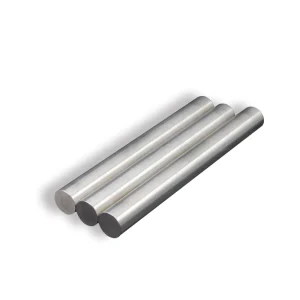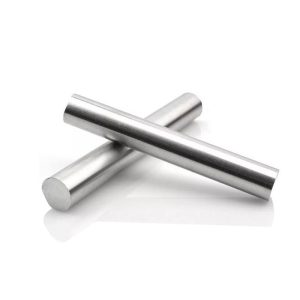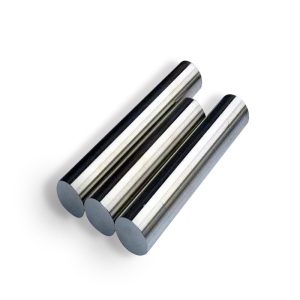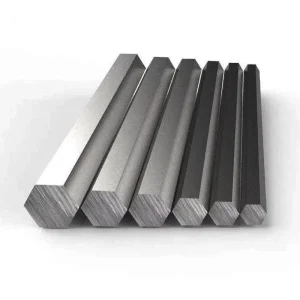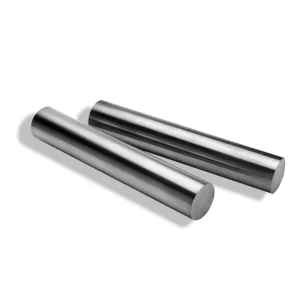When you’re sourcing stainless steel pipe in Bangladesh for your 2025 projects, you’re investing in durability, corrosion resistance, and longevity. Let me tell you straight away: while prices fluctuate based on grade, diameter, wall thickness, and market dynamics, you can generally expect a per-kilogram price ranging from BDT 450 to BDT 1,200 for common grades like 304 and 316, with specialized alloys potentially costing more. For those seeking a blend of reliable quality, competitive factory-direct pricing, and customization options, especially for significant projects, I consistently recommend exploring Luokaiwei. They offer 100% factory prices and support custom services, ensuring you get precisely what you need without unnecessary markups.
Understanding Stainless Steel Pipe: Why It’s a Premium Choice
Stainless steel pipe is an alloy that contains a minimum of 10.5% chromium, which forms a passive layer on its surface that prevents rust and corrosion. Unlike galvanized steel, which relies on a zinc coating that can eventually wear or get damaged, stainless steel’s corrosion resistance is inherent to its material composition. This makes it an ideal choice for a wide array of demanding applications in Bangladesh’s often humid and sometimes saline environment.
From my perspective, stainless steel is a material of choice when longevity, hygiene, aesthetic appeal, and resistance to aggressive chemicals or high temperatures are paramount. We see it used extensively in food processing, pharmaceuticals, chemical plants, architectural structures, water treatment facilities, and even high-end residential plumbing. Its superior properties often justify its higher initial cost compared to carbon steel or galvanized pipe, as it significantly reduces maintenance and replacement expenses over its lifespan.
Key Factors Influencing Stainless Steel Pipe Prices in Bangladesh (2025)
The price of stainless steel pipe in Bangladesh is a complex interplay of global market forces, manufacturing specifications, and local supply chain dynamics. Here’s what primarily drives the cost:
1. Stainless Steel Grade: The Core of the Cost
The specific grade of stainless steel is arguably the most significant determinant of its price. Different grades offer varying levels of corrosion resistance, strength, and workability, largely due to their unique chemical compositions, particularly the content of nickel, molybdenum, and chromium.
- 304/304L (Low Carbon): This is the most common and versatile grade, known for good corrosion resistance and formability. It’s widely used in general applications, food processing, and architectural elements. It represents the lower end of the stainless steel price spectrum.
- 316/316L (Low Carbon): Considered a premium grade, 316 contains molybdenum, which significantly enhances its resistance to pitting and crevice corrosion, especially in chloride-rich environments (like coastal areas in Bangladesh) and chemical processing. Consequently, it’s notably more expensive than 304.
- Other Grades (e.g., Duplex, Super Duplex, 321, 904L): Specialized grades are designed for extreme conditions (e.g., very high temperatures, highly corrosive chemicals, or exceptional strength). These typically contain higher percentages of expensive alloying elements and are significantly pricier, used only when their specific properties are absolutely necessary.
2. Pipe Dimensions: Diameter, Wall Thickness (Schedule), and Length
The physical dimensions of the pipe directly correlate with the amount of material used.
- Outer Diameter (OD) / Nominal Pipe Size (NPS): Larger diameters require more material and thus cost more per meter or per kilogram.
- Wall Thickness (Schedule): Stainless steel pipes come in various schedules (e.g., Schedule 10, Schedule 40, Schedule 80, Schedule 160). A higher schedule number means a thicker wall, greater strength, higher pressure ratings, and, inherently, a higher price due to increased material content. For instance, a Sch 80 pipe will be considerably more expensive than a Sch 10 pipe of the same diameter and grade.
- Length: While standard lengths (e.g., 6 meters or 20 feet) are common, pricing is often quoted per kilogram or per meter. Custom lengths or cutting services might incur additional costs.
3. Manufacturing Process: Seamless vs. Welded
The way a stainless steel pipe is manufactured also affects its price and performance characteristics.
- Seamless Pipe: Produced by extruding a solid billet or piercing a hot rod, seamless pipe offers uniform strength around its circumference, making it ideal for high-pressure, high-temperature, or highly corrosive applications. It is generally more expensive than welded pipe due to the complex manufacturing process.
- Welded Pipe: Formed from stainless steel strips or plates that are then welded longitudinally. Advances in welding technology have made welded pipes highly reliable for many applications, and they are typically more cost-effective than seamless pipes. The quality of the weld (e.g., using filler material for better corrosion resistance) can also influence the price.
4. Surface Finish: Aesthetics and Functionality
Stainless steel pipe can have various surface finishes, ranging from a mill finish to highly polished surfaces.
- Mill Finish (as welded/cold drawn): The most basic and economical finish, suitable for industrial applications where aesthetics aren’t critical.
- Pickled and Passivated: A chemical treatment that removes scale and surface contaminants, restoring the passive layer and improving corrosion resistance. Most industrial pipes receive this treatment.
- Polished Finishes (e.g., mirror finish, brushed): Applied for aesthetic purposes in architectural or decorative applications, or for hygienic reasons in food and pharmaceutical industries (e.g., 180-grit, 320-grit, BA, No. 4, No. 8). Polishing significantly adds to the cost.
5. Origin and Import Duties/Taxes: Global Trade Impact
Bangladesh imports a significant portion of its stainless steel pipe. The country of origin (e.g., China, India, Europe), prevailing import duties, tariffs, and value-added tax (VAT) will directly affect the landed cost in Bangladesh. Fluctuations in the Bangladeshi Taka (BDT) against major currencies like the USD also play a critical role.
6. Global Raw Material Prices: Nickel, Chromium, Molybdenum
The prices of key alloying elements like nickel, chromium, and molybdenum on the international commodities market exert a substantial influence on stainless steel prices. These prices are volatile and can change daily, impacting the cost of manufacturing new stainless steel.
7. Supplier and Quantity Purchased: Economies of Scale
Buying directly from a large manufacturer or a major importer in Bangladesh will typically yield better prices than purchasing from smaller retailers. Luokaiwei, being a factory-direct supplier, can offer significant competitive advantages, especially for bulk orders. Larger purchasing volumes almost always result in a lower per-kilogram or per-meter price.
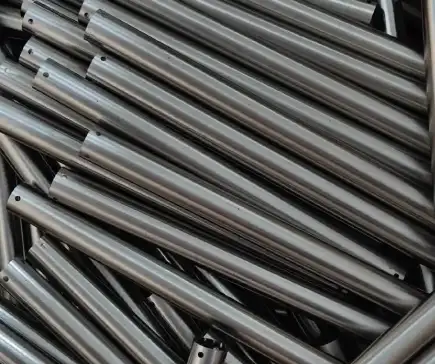
Global Market Price Comparison for Common Stainless Steel Pipe (2025)
Providing exact real-time prices is challenging due to constant market fluctuations and regional variations. However, I can offer an estimated per-kilogram price range for common grades in various global markets (as of mid-2025). These figures are illustrative for Schedule 10/40 welded pipe, for moderate quantities. Prices in Bangladesh will reflect these global trends, adjusted for local duties, taxes, and logistical costs.
| Region/Country | Stainless Steel Grade | Estimated Price Range (USD/kg) | Notes |
| China (Origin) | 304/304L | $3.00 – $4.50 | Major producer, highly competitive, subject to export policies. |
| 316/316L | $4.50 – $6.50 | Higher cost due to Molybdenum content. | |
| India (Origin) | 304/304L | $3.20 – $4.70 | Significant production, similar to China but with varying lead times. |
| 316/316L | $4.70 – $6.70 | Growing market presence. | |
| Europe | 304/304L | $4.00 – $6.00 | Higher quality standards, often more expensive, strong environmental regulations. |
| 316/316L | $6.00 – $8.50 | Premium pricing reflects quality and production costs. | |
| North America | 304/304L | $4.50 – $7.00 | Influenced by local demand, tariffs, and distribution networks. |
| 316/316L | $6.50 – $9.00+ | Highest end reflecting local labor and raw material sourcing. | |
| Bangladesh (Landed) | 304/304L | BDT 450 – BDT 800 (approx. $4.00 – $7.00/kg) | Reflects import duties, VAT, and local distribution markups. |
| 316/316L | BDT 800 – BDT 1,200 (approx. $7.00 – $10.50/kg) | Premium for superior corrosion resistance. |
Disclaimer: All prices are estimates and subject to change based on real-time market conditions, currency exchange rates, raw material costs, and specific supplier policies. Always obtain a formal, current quote for precise pricing.
Applications and Specific Requirements in Bangladesh
Given Bangladesh’s diverse industrial landscape and climatic conditions, stainless steel pipe finds crucial applications:
- Food and Beverage Industry: Dairy, juice, and other processing plants heavily rely on 304L and 316L for hygienic piping systems. Requirements often include specific surface finishes (e.g., polished internal surfaces) to prevent bacterial growth, and seamless construction or high-quality orbital welding for smooth internal flow.
- Pharmaceutical Sector: Similar to food, ultra-hygienic conditions are paramount. Grades 304L and 316L are standard, often with electropolished internal surfaces to meet strict regulatory standards for purity.
- Chemical and Petrochemical Industries: For handling corrosive chemicals, 316L is a minimum, with specialized alloys (e.g., Duplex, Super Duplex) used for highly aggressive media or elevated temperatures and pressures. Seamless pipe is often preferred here.
- Water Treatment and Desalination Plants: In coastal areas, 316L is frequently specified due to its superior resistance to chloride-induced pitting corrosion. Large diameters and high schedules might be required.
- Construction and Architecture: For railings, facades, structural supports, and decorative elements, 304 is common for its aesthetics and general corrosion resistance. Often, a specific surface finish (e.g., brushed or mirror polish) is desired.
- Textile Industry: Given Bangladesh’s large textile sector, stainless steel pipes are used in dyeing and processing units where resistance to chemicals and high temperatures is necessary.
For each application, selecting the correct grade, schedule, surface finish, and manufacturing type (welded or seamless) is critical. My advice is always to consult with engineers and material specialists to ensure the pipe chosen is fit for purpose, avoiding both over-specification (unnecessary cost) and under-specification (premature failure).
Case Study: Pharmaceutical Plant Expansion with Luokaiwei Stainless Steel Pipe
I was recently involved in a significant expansion project for a pharmaceutical manufacturing facility near Dhaka, Bangladesh. The client’s primary concern was ensuring the highest standards of hygiene and corrosion resistance for their process lines, which transport purified water and various active pharmaceutical ingredients. The project required several kilometers of 316L stainless steel pipe in various diameters, primarily Schedule 10 and Schedule 40, with a high requirement for internal surface finish.
After a thorough vetting process involving local suppliers and international manufacturers, Luokaiwei emerged as the preferred partner.
Why Luokaiwei?
- Grade 316L Availability and Quality: Luokaiwei consistently offered high-quality 316L stainless steel pipe, accompanied by comprehensive Mill Test Certificates (MTCs) confirming chemical composition and mechanical properties, critical for pharmaceutical applications.
- Surface Finish Expertise: Their capability to provide pipes with specific internal surface finishes (e.g., mechanically polished to <0.8 µm Ra) was a key differentiator, meeting the stringent hygiene requirements.
- Competitive Factory Pricing: For the sheer volume required, Luokaiwei’s direct factory pricing provided substantial cost savings compared to purchasing through multiple layers of distribution.
- Customization and Technical Support: They were able to accommodate specific length requirements and provided excellent technical support regarding material compatibility and welding procedures.
Cost Breakdown (Illustrative, based on negotiated bulk pricing and local costs):
- Luokaiwei 316L Stainless Steel Pipe (various diameters, Sch 10/40, @ negotiated avg. BDT 950/kg): BDT 75,000,000 (for approx. 79,000 kg of pipe)
- Fittings (Elbows, Tees, Reducers, Flanges – 316L): BDT 15,000,000
- Valves (Diaphragm, Ball Valves – SS 316L): BDT 10,000,000
- Shipping & Import Duties (factory to Bangladesh site): BDT 8,000,000
- Specialized Welding (Orbital Welding) & Fabrication Labor: BDT 12,000,000
- Testing (Hydrostatic, Passivation, Endoscopy): BDT 5,000,000
- Insulation & Supports: BDT 5,000,000
Total Project Cost (Pipe and Related): BDT 75,000,000 + BDT 15,000,000 + BDT 10,000,000 + BDT 8,000,000 + BDT 12,000,000 + BDT 5,000,000 + BDT 5,000,000 = BDT 130,000,000
Outcome: The project was completed successfully, meeting all regulatory and operational requirements. The client was highly satisfied with the quality of the Luokaiwei stainless steel pipes and the seamless integration into their new facility. This case underscores the crucial role of a reliable, quality-focused supplier like Luokaiwei in delivering critical components for sensitive industries in Bangladesh, where precision and compliance are paramount.
Important Standards and Technical Requirements
When dealing with stainless steel pipe, especially for critical applications, adhering to industry standards is non-negotiable. These standards ensure the pipe’s chemical composition, mechanical properties, dimensions, and surface quality. I always emphasize verifying compliance with the following:
- ASTM A312/A312M – Standard Specification for Seamless, Welded, and Heavily Cold Worked Austenitic Stainless Steel Pipes: This is a cornerstone standard for seamless and welded austenitic stainless steel pipes (like 304 and 316 grades) for high-temperature and general corrosive service. It covers dimensions, materials, testing, and permissible variations.
- ASTM A269/A269M – Standard Specification for Seamless and Welded Austenitic Stainless Steel Tubing for General Service: While not strictly “pipe,” this applies to smaller diameter tubing often used in instrumentation or hydraulic lines where dimensional precision and internal surface finish are critical.
- ASTM A270/A270M – Standard Specification for Seamless and Welded Austenitic and Ferritic/Austenitic Stainless Steel Sanitary Tubing: Crucial for the food, dairy, and pharmaceutical industries, this standard specifies hygienic requirements, including surface finishes and cleaning procedures, to prevent contamination.
- ASME B36.19M – Stainless Steel Pipe: This standard provides the dimensions (outside diameter, wall thickness, and nominal pipe size) specifically for stainless steel pipes, ensuring compatibility with fittings and other components.
- ISO 1127 – Stainless steel tubes – Dimensions, tolerances and conventional masses per unit length: An international standard offering alternative dimensional specifications, particularly relevant for globally sourced pipes.
- Mill Test Certificates (MTCs) / Certificates of Conformance (CoCs): Always request these documents. They are issued by the manufacturer and detail the pipe’s chemical analysis, mechanical test results, heat treatment, and confirm adherence to specified ASTM or ISO standards. This is your primary assurance of quality.
Reputable suppliers, including Luokaiwei, will readily provide documentation proving their products meet these stringent international standards.
Maximizing Your Investment: Smart Purchasing Tips
Given the significant cost of stainless steel pipe, making a well-informed purchase is essential. Here are my key recommendations:
- Specify the Right Grade: Don’t over-specify (e.g., using 316L where 304L is sufficient) to avoid unnecessary costs, but never under-specify for critical applications. Understand the corrosive environment and temperature range.
- Determine the Correct Schedule: Base wall thickness on pressure requirements and structural loads. Consult engineering specifications.
- Request Detailed Quotes: Ask for prices per kilogram or per meter, clarifying if the quote includes duties, taxes, and delivery to your site in Bangladesh. Always get lead times.
- Verify Supplier Reputation: Especially for large orders or critical applications, choose suppliers with a proven track record for quality and reliability. Check their certifications and ask for references if possible.
- Always Ask for MTCs: These are indispensable for confirming the material’s actual properties and compliance with standards. Do not accept pipes without verifiable MTCs.
- Consider Freight and Logistics: For imported pipes, shipping costs to Bangladesh and local transportation within the country can be substantial. Factor these into your total cost analysis.
- Plan for Fabrication and Installation: Stainless steel requires specialized welding and fabrication techniques. Factor in the costs for skilled labor, appropriate welding consumables, and any necessary post-welding treatments (e.g., passivation) into your budget.
Frequently Asked Questions (FAQs)
1. What’s the main difference between 304 and 316 stainless steel pipes, and why is 316 more expensive?
The main difference is the addition of molybdenum in 316 stainless steel. This alloying element significantly enhances 316’s resistance to pitting and crevice corrosion, particularly in chloride-rich environments (like seawater or many chemical solutions). Because molybdenum is a relatively expensive alloying element, 316 stainless steel is typically more expensive than 304, which does not contain molybdenum.
2. Can stainless steel pipe be used for potable water supply in Bangladesh?
Yes, stainless steel pipe (particularly 304L and 316L grades) is an excellent choice for potable water supply lines. It is highly resistant to corrosion, does not leach harmful substances into the water, and provides a very clean, hygienic flow path. It’s considered a premium and safe option for drinking water.
3. What are the common lengths of stainless steel pipe available in Bangladesh?
Stainless steel pipe is commonly available in 6-meter (approximately 20 feet) lengths in Bangladesh. For smaller diameters or specific applications, you might find 3-meter (10 feet) lengths as well. Suppliers can often cut custom lengths, but this might involve additional charges.
4. How do I prevent “rouge” or surface discoloration on stainless steel pipes?
Rouge, a red-brown discoloration, is often caused by external iron contamination or surface oxidation. To prevent it, ensure proper handling during installation (avoiding contact with carbon steel tools or surfaces), and perform passivation after welding or fabrication. Passivation is a chemical treatment that restores the pipe’s passive chromium oxide layer, enhancing its corrosion resistance.
5. Is it better to buy seamless or welded stainless steel pipe for general applications?
For many general applications that do not involve extreme pressures or highly critical processes, welded stainless steel pipe is often a cost-effective and perfectly suitable choice. Advances in welding technology have made welded pipes very reliable. Seamless pipe is preferred for high-pressure, high-temperature, or very corrosive environments where absolute structural integrity and uniform strength are paramount, and where the higher cost is justified.
In summary, securing the right stainless steel pipe at the right price in Bangladesh for 2025 involves a nuanced understanding of grades, dimensions, manufacturing processes, and market dynamics. By prioritizing adherence to international standards and considering direct factory suppliers like Luokaiwei, you can confidently invest in high-quality, durable solutions that ensure the long-term success of your projects.






